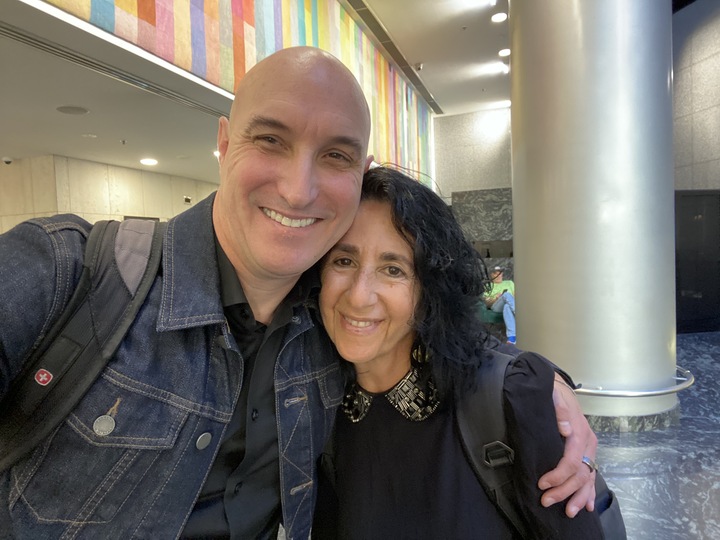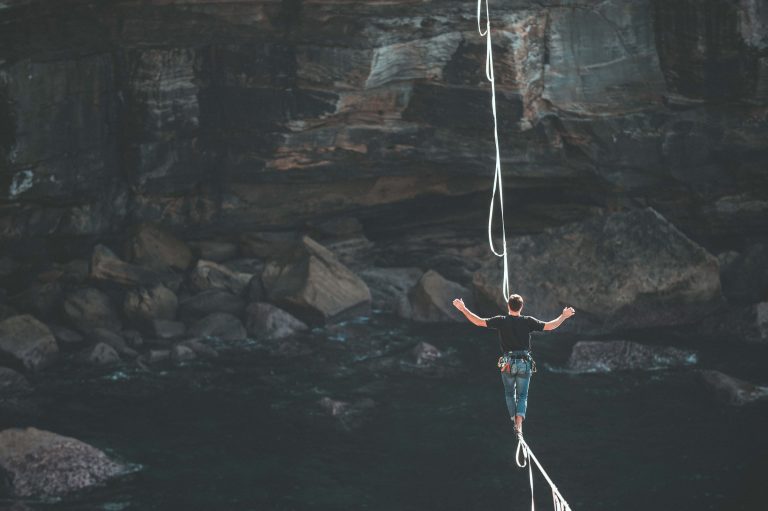CEO Kyle Hermans shares with the CEO of Utopiax Christina Gerakiteys how he came up with the concept for Be Courageous and the role of courage in facilitating breakthroughs
After an inspiring keynote on Courageous Leadership at the Australian Young President’s Organization’s Future-maker’s Summit, Be Courageous CEO, and Founder Kyle Hermans sat down for a candid conversation about courage with the CEO of Utopiax and SingularityU Expert Christina Gerakiteys. They discussed what inspired the name Be Courageous, Kyle’s best techniques for unlocking courage, creativity, and collaboration, and what he finds the most challenging in this business.
Christina Gerakiteys (CG):
Thank you for spending this time with us! I’m going to kick off with a question I would love to ask you. And that is, when were you actually courageous enough to and why were you courageous enough to name your company, Be Courageous?
Kyle Hermans (KH):
First, thank you for having me here. I love being back in Australia. You know, Be Courageous is my third company, but this is the one I think is probably the most courageous.
Prior to Be Courageous, I helped build a different global consultancy. We had a head office in Boston. It was a cold, wintry day, and we had all of our international team in for an off-site. In that meeting, a major tension point hit which resulted in some company members splitting off to create a different agency.
On the screen was a quote from one of the founders of that company. It said, “Another word for creativity is courage.” And amid arguments and massive tension in the room, I had a revelation. “Wait a second,” I thought. “Both sides have equally powerful arguments. Both see a future they want to materialize, and both are conflicted trying to convince the other side.”
I realized that sometimes courage comes from conflict. From survival mode. From fear. From being backed into a corner. And then, without sounding weird, I had this bolt of lightning epiphany moment where I saw myself creating a company to help people tap into the thing they really want to do in their life but are held back by fear or by obstruction. So the name just had to be, “Be Courageous” because that’s what it says it does on the box.
CG: That bolt is a gift and something that we both love to give to other people. What have been your best techniques to do this?
KH: I’ll preface by saying I believe we have to create a relationship with our creativity, and we have to create a relationship with our intuition. One effective visual is to imagine you have a straw, and that you can put that straw up into the sky of creativity, like a soup of creativity. And you can sip from this creative source –it gives you ideas and inspiration. Of course, it’s up to us whether we actually act on the ideas or not.
There are two things I’ve tried to do. One is to help people realize their future (both what they want and making it a reality). The second is to help people realize their potential. A lot of people don’t believe in themselves. They say, “Oh, I don’t have the skill to do that,” or “Oh, that’s too big,” or “There’s no way I could figure that out.”
So the two parts I use as my core techniques are to first help somebody identify, envision, and create a safe, trusted place for them to start thinking about and imagining a bold, unimaginable future. The second part is to help them identify the side of themself where they actually do have what it takes to get there. So my core techniques surround realizing the future and realizing potential. Courage is the fuel that drives the action.
CG: What do you find most challenging? And what gives you the biggest spark when you’re working with different organizations?
KH: Great question. What I’m finding the most challenging is the fear that is out there. Fear of expressing one’s creativity. Fear of uncertainty. Many people are in jobs they don’t want to be in, working with people they don’t like, and they’re frozen in fear. One of the biggest blockages for us to be able to really put good things into the world is people’s preference to stay within what’s most comfortable.
To find a courageously charged mindset requires effort, and it requires challenging your thinking. The fear of change and the fear of the process of change is what we wrestle the most with.
We’ve spent the past year partnering with the State University of New York, New Paltz to create the world’s largest study on the character traits of courage. We’re getting powerful datasets on what creates courageous behaviors and what doesn’t. I’m so excited about being able to bring that to the world.
We see courage and fear as partners. Where there is fear, there is courage, and where there is fear, there is always courage. Our job is to identify the fear and then identify the courage that’s needed in that moment to overcome that fear and take action on it.
We’re turning courage into a verb. If you look in the dictionary, it says courage is a noun, and we’re campaigning to have it also classified as a verb. Courage is an action you can take by asking, “What is the courage needed in this moment?” “How can I courage this situation courage, this project, this relationship?” Asking those questions allows you to access a different type of creativity and a different type of thinking. As soon as that happens, we see a person’s “creative sipping straw” tap more deeply into new areas of the “creative soup.” And the fear response? Totally gone.
The fearful voice people hear in their heads is rarely their own voice. It’s almost always someone else’s, like a parent, coach, or teacher, or someone from their past who told them they weren’t good enough or their ideas were impossible.
The courageous voice inside them is almost always their own voice, their true inner voice. So that’s it’s an exciting tune-in for us, and it almost always creates a massive epiphany and revelation when we help someone in session access their authentic voice.
CG: I think that’s a perfect thing to leave people inspired with. Thank you so much for sharing!


